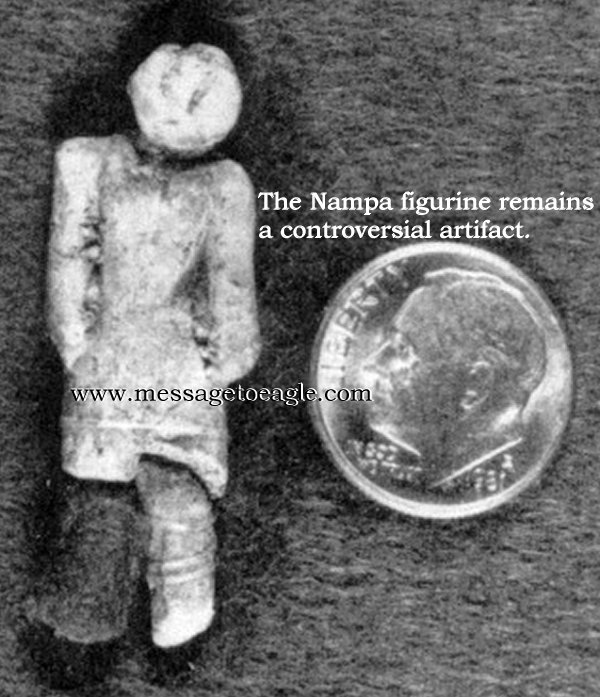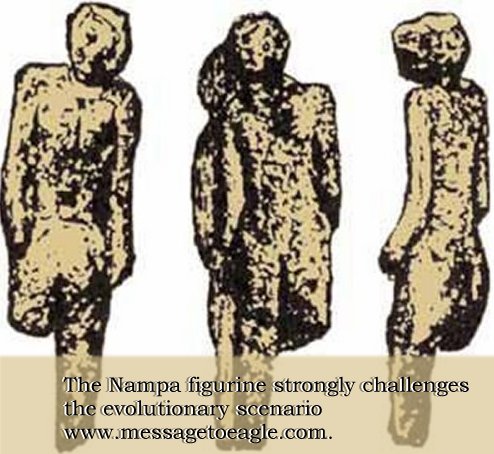Nampa Figurine That Strongly Challenges The Evolutionary Scenario: Controversial Case Of Extreme Human Antiquity
A. Sutherland – MessageToEagle.com – A tiny artifact depicting a human figure was found in 1889, when workers were drilling a water well near Nampa, in southwest Idaho.
The artifact skillfully formed in clay is a true mystery that has baffled scientists for many years.
“The record of the well shows that… they had penetrated first about fifty feet of soil, then about fifteen feet of basalt, and afterwards passed through alternate beds of clay and quicksand…down to a depth of about three hundred feet when the sand pump began to bring up numerous clay balls, some of them more than two inches in diameter, densely coated with iron oxide,” geologist of Boston Society of Natural History, George Frederick Wright (1838-1921) reported in his book “Origin and Antiquity of Man” (1912).
“There is no ground to question the fact that this image came up in the sand pump from the depth reported.”
When the workers reached a layer of clay over 300 feet down in the well boring, their steam pump suddenly spat out a piece of brownish clay formed into a small figurine.
“The object is about an inch and a half long, and remarkable for the perfection with which it represents the human form.” He added, “It was a female figure, and had the lifelike lineaments in the parts which were finished that would do credit to the classic centers of art,” Wright wrote.

Professor F.W. Putnam of Harvard University found through microscopic analysis that quartz grains under the doll’s right arm had been cemented by iron molecules.
This too indicates a great age of the artifact and is reason to believe it is not of recent manufacture. It was deeply colored with the iron oxides characteristic of the deposits from the 300-foot level (91 meters). The strata at this depth is dated at about 2 million years old.
Who formed this mostly unusual figurine if not Homo sapiens?
“Other than Homo sapiens sapiens, no hominid is known to have fashioned workds of art like the Nampa figurine,” writes Michael Cremo in his famous book ” The Hidden History of the Human Race“.
“The evidence therefore suggests that humans of the modern type were living in America at the Plio-Pleistocene age which dates about 2 million years ago.
“According to current Darwinian theories of evolution, figurines like the Idaho image are made only by humans of the modern type, who came into existence only about 200,000 years ago,” Cremo writes. The oldest statues of human figures of a degree of artistry similar to that of the Nampa image only go back to the Late Paleolithic period of Europe, about 20,000 or 30,000 years.”
“According to the ancient Sanskrit writings of India, however, humans have been present since the beginning of life on earth. There are figures of gods and goddesses in Indian temples that, according to traditional sources, are as old as the Nampa image and older.”
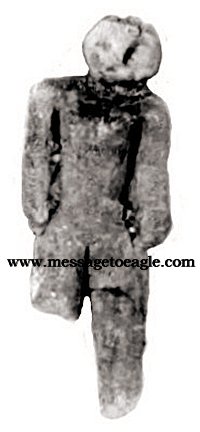
8
Many scientists investigated this extremely controversial figurine and conducted diverse tests shortly after the discovery. They agreed that the figurine is authentic and of very ancient origins.
There are also faint geometric markings on the figure, which represent either clothing patterns or jewelry -they are found mostly on the chest around the neck, and on the arms and wrists. The doll is the image of a person of a high civilization, artistically attired.” (J.R. Jochmans, Litt.D., 1979)
According to Cremo, the Nampa figurine strongly challenges the evolutionary scenario. Indeed, it does.
Nampa artifact is on exhibit at the Idaho State Historical Society in Boise.
Written by – A. Sutherland – MessageToEagle.com Senior Staff Writer
Copyright © MessageToEagle.com. All rights reserved. This material may not be published, broadcast, rewritten or redistributed in whole or part without the express written permission of MessageToEagle.com.
Related Posts
-
 Blue People Of Kentucky And Their Unusual Genetic Condition – Humans With Blue Skin Are Real
No Comments | Mar 13, 2019
Blue People Of Kentucky And Their Unusual Genetic Condition – Humans With Blue Skin Are Real
No Comments | Mar 13, 2019 -
 Bizarre Ancient Capuchin Crypt ‘Decorated’ With The Bones Of 4,000 Monks
No Comments | Aug 20, 2016
Bizarre Ancient Capuchin Crypt ‘Decorated’ With The Bones Of 4,000 Monks
No Comments | Aug 20, 2016 -
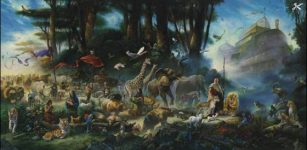 The Great Flood And Noah’s Ark Were Real Events- Scientist Says
No Comments | Jun 21, 2014
The Great Flood And Noah’s Ark Were Real Events- Scientist Says
No Comments | Jun 21, 2014 -
 The Wonderfully Weird Crooked House – One Of The Strangest Buildings In The World
No Comments | Jul 14, 2012
The Wonderfully Weird Crooked House – One Of The Strangest Buildings In The World
No Comments | Jul 14, 2012 -
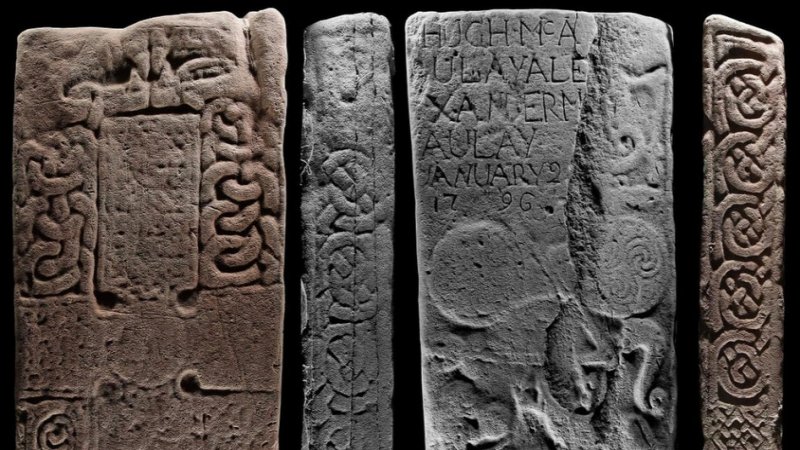 Rare Lost Pictish Stone With Strange Mythical Beasts Goes On Display For The First Time
No Comments | Dec 12, 2020
Rare Lost Pictish Stone With Strange Mythical Beasts Goes On Display For The First Time
No Comments | Dec 12, 2020 -
 Could A Huge Earthquake Sink A Whole Country?
No Comments | Jan 8, 2018
Could A Huge Earthquake Sink A Whole Country?
No Comments | Jan 8, 2018 -
 Scientists Confront ‘Energy Vampires’ – A New Name For An Old Phenomenon
No Comments | Nov 27, 2015
Scientists Confront ‘Energy Vampires’ – A New Name For An Old Phenomenon
No Comments | Nov 27, 2015 -
 Unusual Double Temple Of Kom Ombo Dedicated To Crocodile God Sobek And Falcon-Headed God Horus
No Comments | Mar 14, 2016
Unusual Double Temple Of Kom Ombo Dedicated To Crocodile God Sobek And Falcon-Headed God Horus
No Comments | Mar 14, 2016 -
 Acacia Tree Uses Ants As Body Guards And Rewards Them With Shelter And Food
No Comments | Nov 3, 2016
Acacia Tree Uses Ants As Body Guards And Rewards Them With Shelter And Food
No Comments | Nov 3, 2016 -
 Mysterious Hakkari Stelae: Were They Carved By Inhabitants Of Ancient Kingdom Of Hubushkia?
No Comments | May 16, 2016
Mysterious Hakkari Stelae: Were They Carved By Inhabitants Of Ancient Kingdom Of Hubushkia?
No Comments | May 16, 2016

